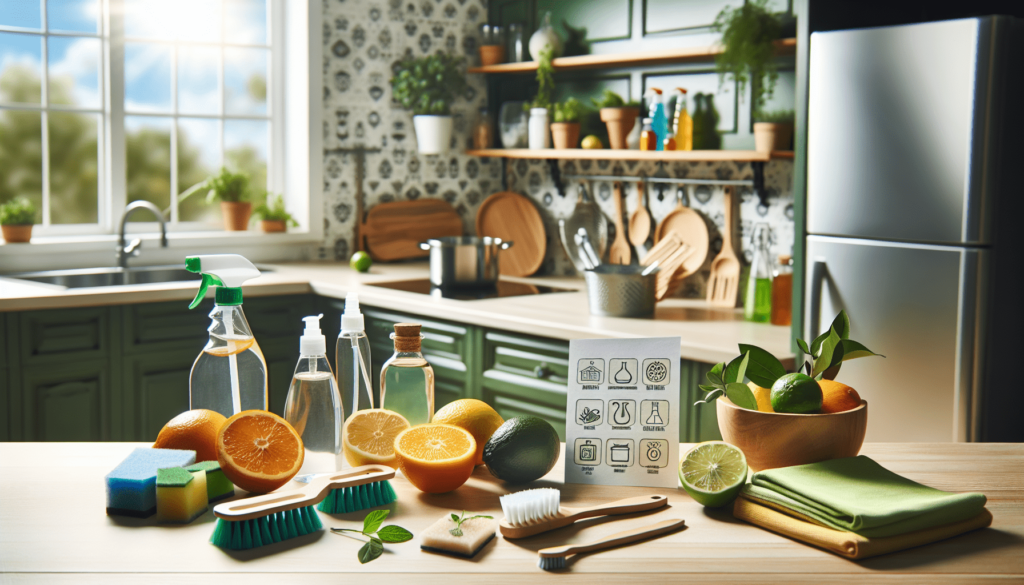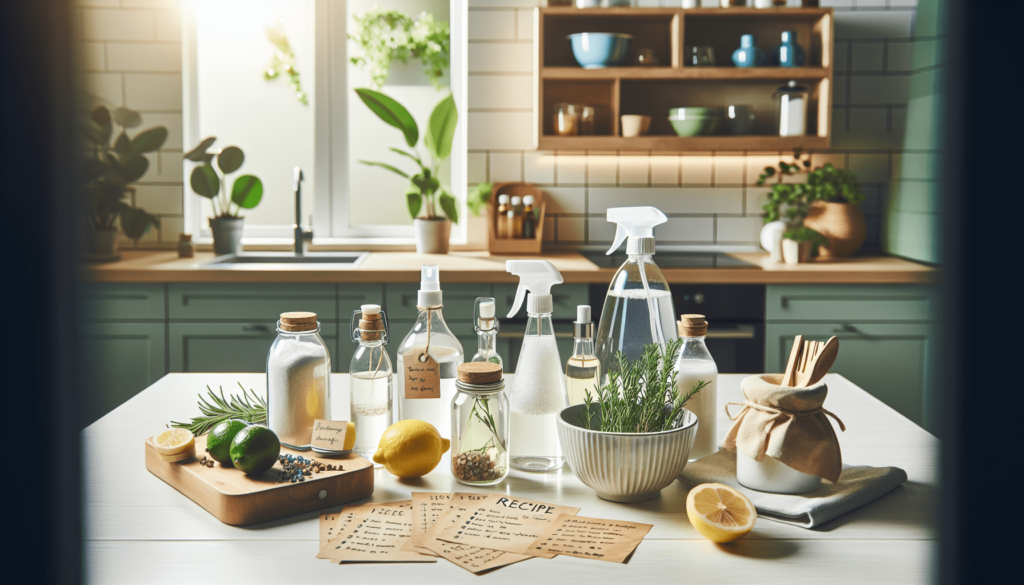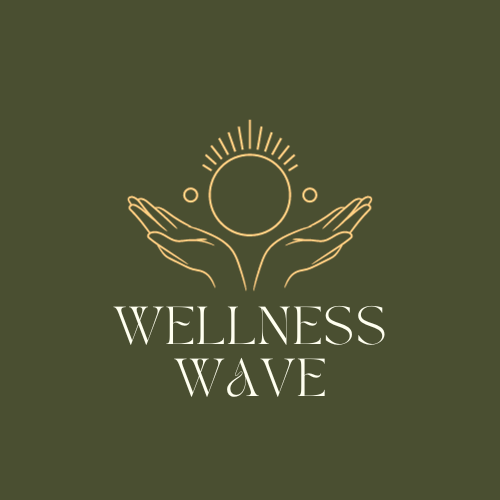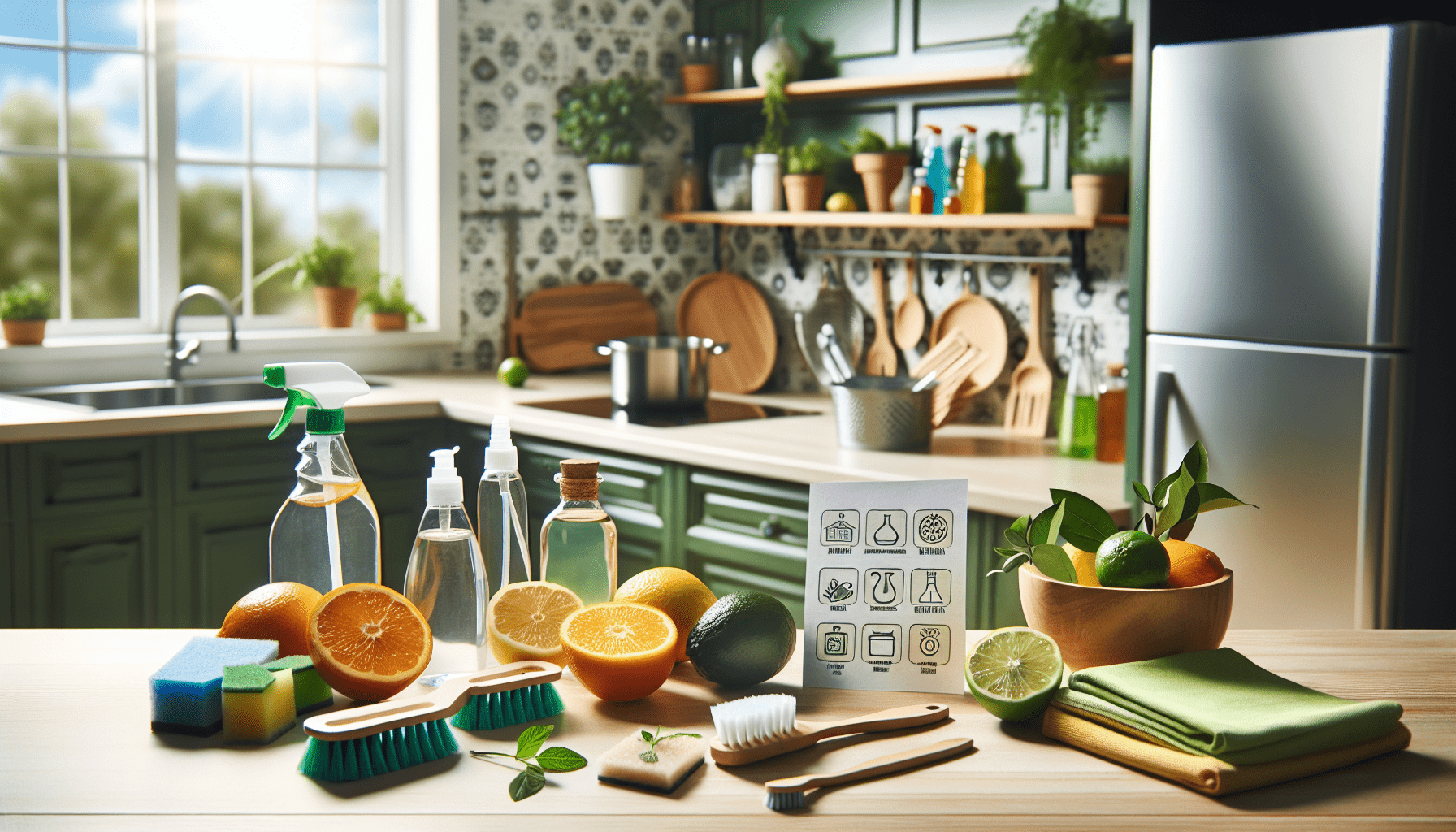Are you looking for effective and environmentally-friendly cleaning solutions for your home? Look no further! In this article, we will explore a range of holistic cleaning solutions that not only keep your home sparkling clean, but also help to protect the planet. From natural ingredients to DIY recipes, you’ll discover easy and cost-effective ways to make your home a healthier and greener place. Say goodbye to harsh chemicals and hello to a cleaner conscience with these eco-friendly cleaning solutions.
Introduction to Eco-friendly Holistic Home Cleaning Solutions
Cleaning our homes is an essential part of maintaining a healthy living environment, but have you ever considered the impact that conventional cleaning products can have on our health and the environment? That’s where eco-friendly holistic home cleaning solutions come in. These cleaning methods and products prioritize the use of natural ingredients, promote sustainable practices, and provide a comprehensive approach to cleaning that goes beyond just tidying up. In this article, we will explore the definition and importance of eco-friendly cleaning, discuss the benefits of using holistic cleaning solutions, and provide an overview of the article content.
Understanding Eco-friendly Cleaning
Definition of eco-friendly cleaning
Eco-friendly cleaning, also known as green cleaning, refers to the use of products and practices that are designed to minimize harm to humans and the environment. This approach focuses on utilizing natural and biodegradable ingredients that are free from toxic chemicals, artificial fragrances, and harsh additives. By opting for eco-friendly cleaning, you can create a safer and healthier living environment for yourself, your family, and your furry friends.
Why choose eco-friendly cleaning products
Choosing eco-friendly cleaning products over conventional ones offers a plethora of benefits. First and foremost, these products are safer for your health. Many conventional cleaning products contain chemicals that can be harmful when inhaled or even absorbed through the skin. Eco-friendly cleaning products, on the other hand, are made from natural and non-toxic ingredients, making them a healthier alternative for both you and the environment.
Common eco-friendly cleaning ingredients
When it comes to eco-friendly cleaning, there are several commonly used ingredients that are not only safe but also effective. These ingredients include vinegar, baking soda, lemon juice, essential oils, and hydrogen peroxide. Each of these natural ingredients has its own unique cleaning properties and can be used individually or in combination to tackle a wide range of cleaning tasks.
How to identify eco-friendly cleaning products
Identifying eco-friendly cleaning products may seem like a daunting task, but it doesn’t have to be. Look out for labels that indicate the product is free from phthalates, parabens, chlorine, artificial fragrances, and synthetic dyes. Additionally, certifications such as the Environmental Protection Agency’s Safer Choice label or independent eco-certifications can ensure that the product meets specific environmental and health criteria.

Benefits of Holistic Cleaning Solutions
What is holistic cleaning
Holistic cleaning is a comprehensive approach that takes into account not only the cleanliness of your home but also the impact on your health and the environment. It focuses on creating a harmonious balance by incorporating natural and sustainable practices. Holistic cleaning goes beyond just surface cleaning and takes into consideration the overall well-being of your home and the people living in it.
Health benefits of holistic cleaning
One of the primary benefits of holistic cleaning is that it promotes a healthier living space. By using natural and non-toxic cleaning products, you can reduce your exposure to harmful chemicals, minimize respiratory issues, and alleviate allergies. Furthermore, holistic cleaning methods prioritize proper ventilation and air quality, ensuring that you and your loved ones breathe in clean and fresh air.
Environmental benefits of holistic cleaning
Holistic cleaning practices also have a positive impact on the environment. Traditional cleaning products often contain harsh chemicals that can pollute waterways and harm aquatic life. By choosing holistic cleaning solutions, you can minimize your contribution to water pollution and reduce your carbon footprint. Additionally, using natural ingredients reduces packaging waste and minimizes the demand for single-use cleaning items.
Cost-effectiveness of holistic cleaning
Contrary to popular belief, holistic cleaning can be cost-effective in the long run. While eco-friendly cleaning products may sometimes have a higher upfront cost, they are often concentrated and require less product per use. Furthermore, many natural ingredients used in holistic cleaning, such as vinegar and baking soda, are inexpensive and can be found in your pantry. By making your own cleaning solutions and reusing cleaning tools, you can save money while maintaining the cleanliness of your home.
Eco-friendly Cleaning Recipes
All-purpose cleaner recipe
Creating your own all-purpose cleaner is simple and effective. Mix equal parts of distilled white vinegar and water in a spray bottle, and add a few drops of your preferred essential oil for a pleasant scent. This all-purpose cleaner is perfect for cleaning countertops, kitchen appliances, bathroom fixtures, and much more.
Window and glass cleaner recipe
For streak-free windows and glass surfaces, combine 1 part distilled white vinegar with 1 part water in a spray bottle. Spray the solution onto the surface, wipe with a microfiber cloth, and say goodbye to those annoying streaks.
Bathroom cleaner recipe
To tackle grime and soap scum in your bathroom, mix equal parts baking soda and liquid Castile soap to form a paste. Apply the paste to the desired area, scrub with a brush or sponge, and rinse thoroughly. This homemade bathroom cleaner is not only effective but also gentle on the surfaces.
Kitchen cleaner recipe
To keep your kitchen sparkling clean, combine 1 cup of water, 1 cup of vinegar, and the juice of half a lemon in a spray bottle. This natural kitchen cleaner is great for countertops, appliances, and even cutting boards. The acidity of the lemon juice helps to cut through grease and remove stubborn stains.
Floor cleaner recipe
For an eco-friendly floor cleaner, mix 1 cup of distilled white vinegar with 1 gallon of warm water. This simple solution works wonders on a variety of flooring types, including hardwood, tile, and laminate. Just mop the floor as usual and enjoy a clean and fresh surface without the use of harsh chemicals.

Homemade Cleaning Tools
DIY scrub brushes and sponges
Instead of purchasing disposable scrub brushes and sponges, consider making your own reusable versions. You can repurpose old toothbrushes for small scrubbing tasks or create a homemade scrub brush using natural materials such as coconut fiber. When it comes to sponges, crochet or knit your own using cotton yarn for a reusable and eco-friendly option.
Reusable cleaning cloths
Say goodbye to single-use paper towels and switch to reusable cleaning cloths. Old cotton t-shirts or towels can easily be cut into smaller pieces and used as cleaning rags. These cloths can be washed and used repeatedly, reducing waste and saving you money in the long run.
Homemade dusters
Instead of disposable dusters made of synthetic materials, opt for homemade alternatives using natural materials. Attach an old sock to a wooden dowel for a simple yet effective duster. You can also use ostrich feathers or microfiber cloths for dusting various surfaces in your home.
Natural air fresheners
Rather than relying on artificial air fresheners that contain harmful chemicals, why not make your own natural alternatives? Simmer a pot of water with citrus peels, cinnamon sticks, and a few drops of your favorite essential oil for a fresh and invigorating scent. Another option is to create your own room spray by combining water, vodka, and essential oils in a spray bottle.
Tips for Reducing Waste in Cleaning
Using cloth instead of paper towels
By using cloth instead of paper towels, you can significantly reduce the amount of waste generated during cleaning. Keep a stack of reusable cleaning cloths on hand and simply toss them in the laundry after use. Not only will you save money in the long run, but you’ll also contribute to a more sustainable future.
Opting for refillable cleaning product containers
Many eco-friendly cleaning brands offer refillable containers for their products. Instead of purchasing a new bottle each time, look for options that allow you to refill your existing container. This not only reduces packaging waste but also saves you money on buying new bottles.
Managing proper disposal of cleaning waste
When it comes to disposing of cleaning waste, it’s important to do so responsibly. Avoid pouring hazardous liquids down the drain or toilet, as they can contaminate water sources. Instead, look for local recycling or hazardous waste facilities where you can safely dispose of cleaning waste. By following proper disposal methods, you can protect both the environment and human health.
Avoiding single-use cleaning items
Single-use cleaning items, such as disposable wipes and mop pads, contribute to a significant amount of waste. Instead, opt for reusable alternatives, such as microfiber cloths and washable mop pads. These options can be easily cleaned and reused, reducing the amount of waste that ends up in landfills.
Eco-friendly Laundry Solutions
Choosing eco-friendly laundry detergents
When it comes to laundry, choosing eco-friendly laundry detergents is a simple yet impactful step you can take. Look for products that are free from phosphates, chlorine, and artificial fragrances. Additionally, consider using concentrated detergents or switching to natural laundry soap nuts, which are derived from the soapberry tree and are biodegradable.
Using natural stain removers
Instead of relying on chemical-based stain removers, try natural alternatives. Baking soda, lemon juice, and hydrogen peroxide are effective at removing stains from clothing. Simply apply the chosen ingredient to the stain, let it sit for a few minutes, and launder as usual.
Air-drying clothes
Reducing energy consumption in the laundry room is another way to make your cleaning routine more eco-friendly. Whenever possible, opt for air-drying your clothes instead of using a dryer. Hanging clothes on a clothesline or drying rack not only saves energy but also helps to extend the lifespan of your garments.
Minimizing water and energy consumption
To further reduce your environmental impact, consider washing your laundry in cold water. The majority of energy used by a washing machine goes towards heating the water, so opting for cold water washing can significantly reduce energy consumption. Additionally, make sure to run full loads of laundry to maximize water efficiency.
Creating a Sustainable Cleaning Routine
Establishing a schedule
Creating a sustainable cleaning routine starts with establishing a schedule that works for you. By designating specific days or times for different cleaning tasks, you can ensure that your home stays clean and organized without feeling overwhelmed. Having a routine also helps to prevent the build-up of dirt and grime, making your cleaning efforts more effective and efficient.
Reducing the frequency of deep cleaning
Deep cleaning, while necessary, can be time-consuming and resource-intensive. To minimize the environmental impact, consider reducing the frequency of deep cleaning. Instead, focus on regular maintenance tasks such as dusting, sweeping, and wiping surfaces. By staying on top of small cleaning tasks, you can prevent the need for extensive deep cleaning as frequently.
Prioritizing areas that need more attention
In a holistic cleaning routine, it’s important to prioritize areas that require more attention. For example, spaces such as bathrooms and kitchens often harbor more bacteria and require more frequent cleaning. By identifying these high-traffic areas and addressing them regularly, you can maintain a cleaner and healthier living environment.
Incorporating preventative measures
A sustainable cleaning routine is not just about cleaning; it’s also about prevention. Incorporate preventive measures such as using doormats to reduce dirt tracked into the home, implementing a “no shoes indoors” policy, and utilizing storage solutions to keep clutter at bay. By taking proactive measures, you can minimize the need for frequent cleaning and make your cleaning routine more sustainable.
Eco-friendly Cleaning for Different Surfaces
Cleaning hardwood floors
When it comes to cleaning hardwood floors, it’s important to avoid excessive moisture. A mixture of water and vinegar may be used sparingly for spot cleaning, but avoid saturating the floor. Instead, opt for dry or slightly damp mopping using a microfiber mop to preserve the integrity of the floor and minimize the use of cleaning products.
Tackling carpet stains
For carpet stain removal, start by blotting the stain with a clean cloth to absorb as much liquid as possible. Avoid rubbing, as it can push the stain deeper into the fibers. Next, create a solution by combining equal parts water and vinegar. Spray the solution onto the stain, let it sit for a few minutes, and blot with a clean cloth. Repeat as necessary until the stain is removed.
Maintaining tile and grout cleanliness
To maintain clean tile and grout, a mixture of vinegar and water can be used to remove dirt and grime. Apply the solution to the tiles and grout lines, and scrub using a brush. For stubborn stains or mildew, a paste made from baking soda and water can be applied to the affected areas. Allow the paste to sit for a few minutes, scrub, and rinse thoroughly.
Cleaning stainless steel appliances
Stainless steel appliances can easily accumulate fingerprints and smudges. To clean them, start by wiping the surface with a microfiber cloth or sponge dampened with warm water and mild dish soap. For a streak-free shine, follow up with a solution of equal parts distilled white vinegar and water. Wipe dry with a clean cloth to prevent water spots.
Removing mold and mildew naturally
When dealing with mold and mildew, it’s important to address the root cause of moisture to prevent their growth. Once the moisture issue is resolved, tackle the mold and mildew using natural solutions. A mixture of vinegar and water can be sprayed onto the affected area and left to sit for a few minutes. Scrub the surface with a brush and rinse thoroughly. If the mold and mildew persist, consult a professional.
Conclusion
In conclusion, eco-friendly holistic home cleaning solutions offer numerous benefits for both your health and the environment. By choosing eco-friendly cleaning products, adopting holistic cleaning practices, and utilizing homemade cleaning recipes and tools, you can create a clean and healthy living environment while minimizing your ecological footprint. By making the switch to eco-friendly cleaning, you are taking a proactive step towards a more sustainable future. So why not start today and make a positive change for yourself and the world around you?

